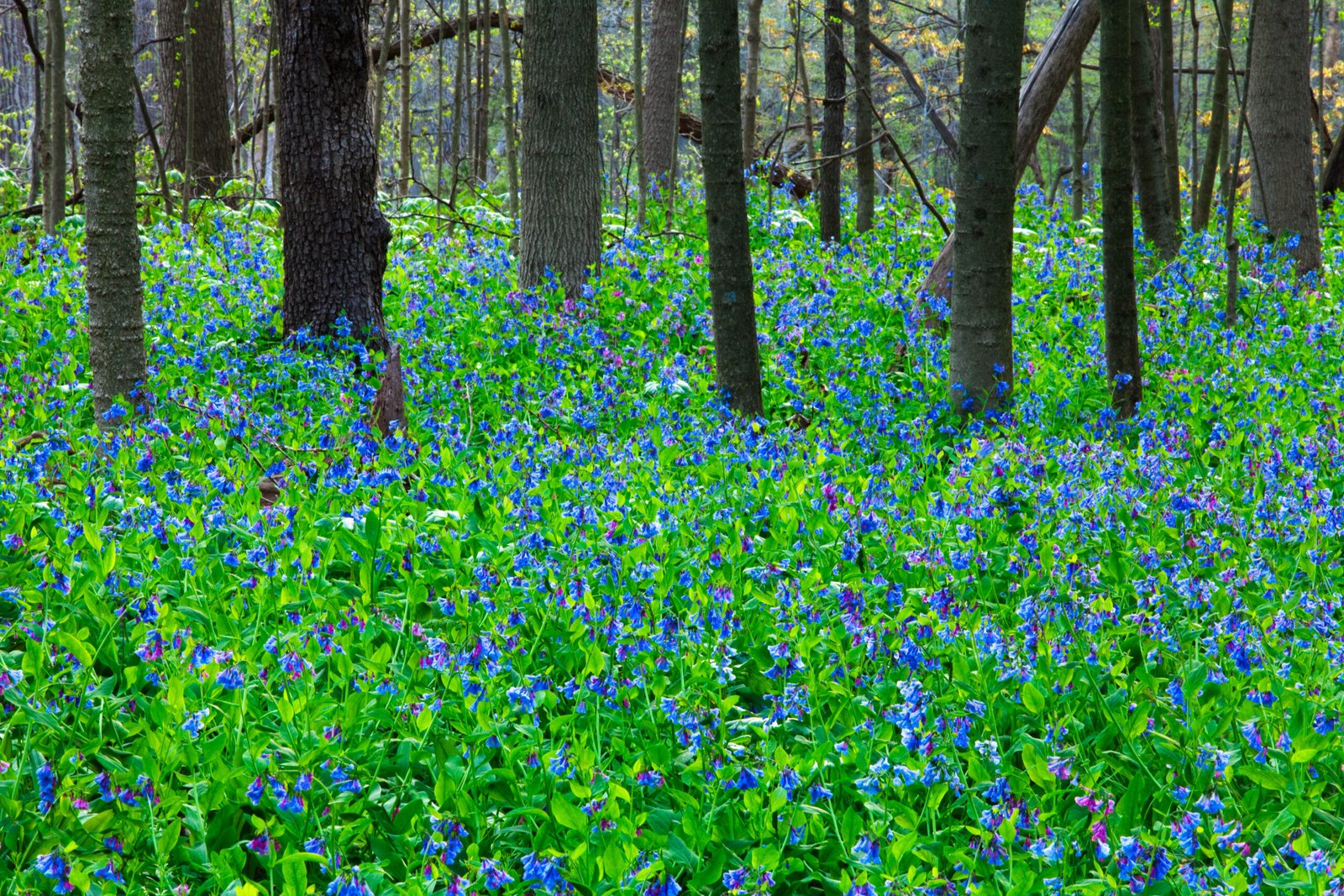Not all native plants crave full sun and wide-open meadows. Some thrive in the quieter corners — under trees, along woodland edges, or in those stubborn shady spots where lawn grass gives up. Shade gardens may not scream color like a prairie, but they offer subtle texture, layered beauty, and serious habitat value when planted with the right natives.
These species evolved to grow beneath canopies, adapted to filtered light, spring ephemerality, and rich, undisturbed soils. They support specialist pollinators, feed early-emerging bees, and create space for amphibians, birds, and insects often overlooked.
Here’s how to build a shady native plant garden that hums with life — even if the sun rarely touches it.
Why Grow a Native Shade Garden?
- Ecological role: Many woodland natives bloom early, feed spring bees, and serve as host plants for butterflies and moths.
- Low maintenance: Once established, shade-tolerant natives thrive on leaf litter and need little watering or fuss.
- Visual appeal: Texture-rich foliage, soft spring blooms, and quiet seasonal changes offer subtle beauty year-round.
- Habitat value: Shade gardens provide cool cover, moisture retention, and breeding ground for toads, fireflies, and birds.
And unlike traditional shade landscaping (hostas, impatiens, mulch deserts), native shade gardens actually do something.
Top Native Plants for Shade
Here are some standouts for woodland or part-shade settings, grouped by function:
🌸 For Early Blooms & Pollinators
- Virginia Bluebells (Mertensia virginica) – ephemeral beauty that feeds queen bumble bees
- Wild Columbine (Aquilegia canadensis) – nodding red-yellow flowers for hummingbirds
- Wild Geranium (Geranium maculatum) – finely cut foliage, vibrant pinkish-purple blooms, and spreads easily—forming eye-catching patches that buzz with bees, butterflies, and everything in between.
- Spring Beauty (Claytonia virginica) – small woodland native pulls big weight for pollinators—feeding everything from honey bees and bumblebees to mason, cuckoo, Halictid, and Andrenid bees.
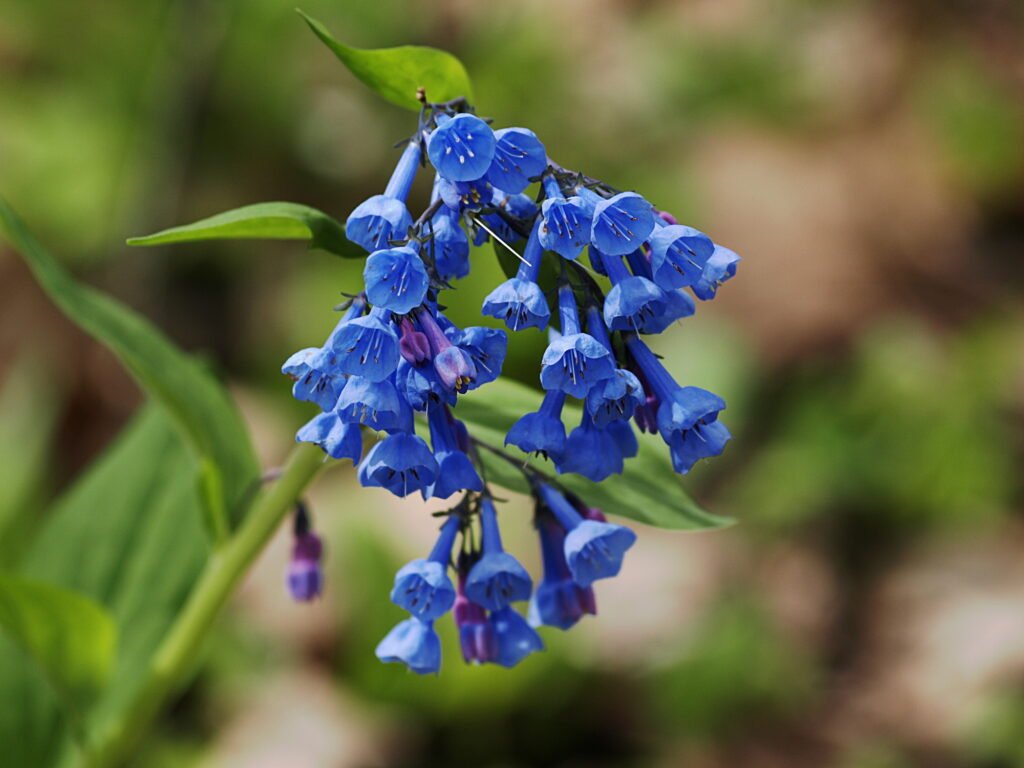
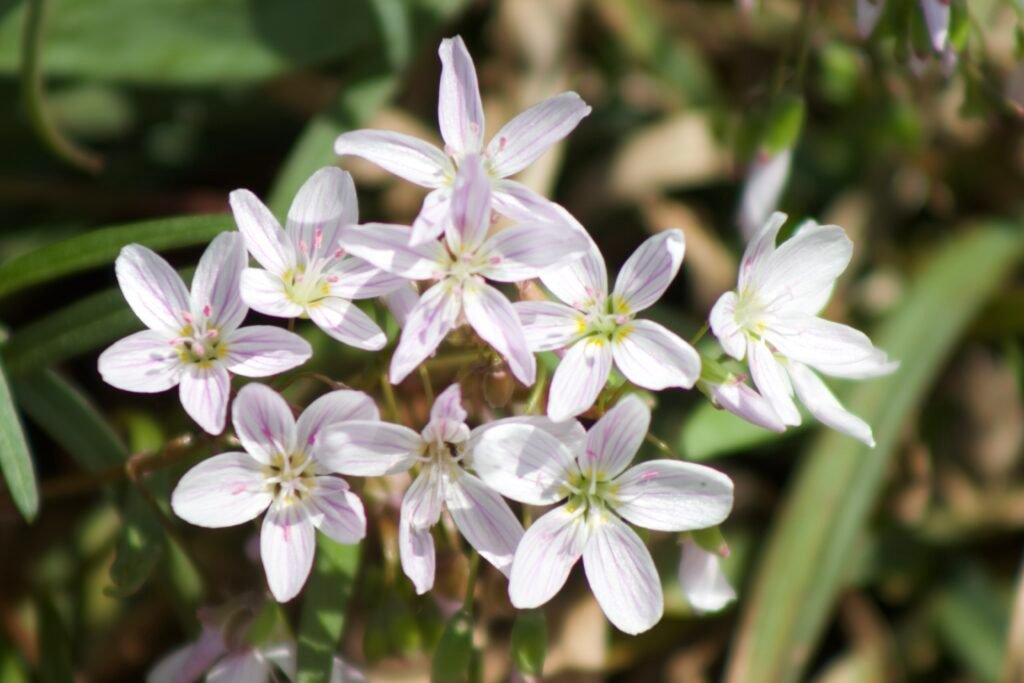
🍂 For Groundcover & Texture
- Wild Ginger (Asarum canadense) – heart-shaped leaves, great groundcover under trees
- Early Meadow Rue (Thalictrum dioicum) – Kicks off the season with precocious little blooms—broccoli-like bud clusters that pop open just as the first leaves start to wake up.
- Common Blue Violet (Viola sororia) – edible flowers, host plant for fritillary butterflies
- Wild Strawberry (Fragaria virginiana) – more than just early-summer blooms and tasty fruit—it also lights up with brilliant red foliage in fall
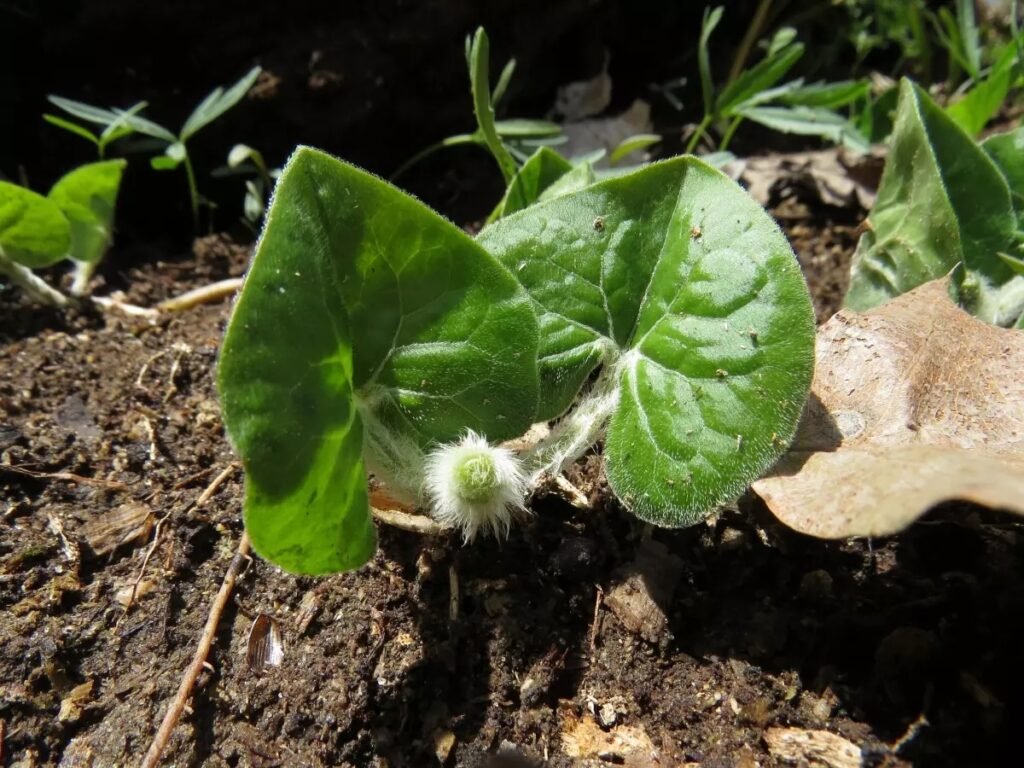
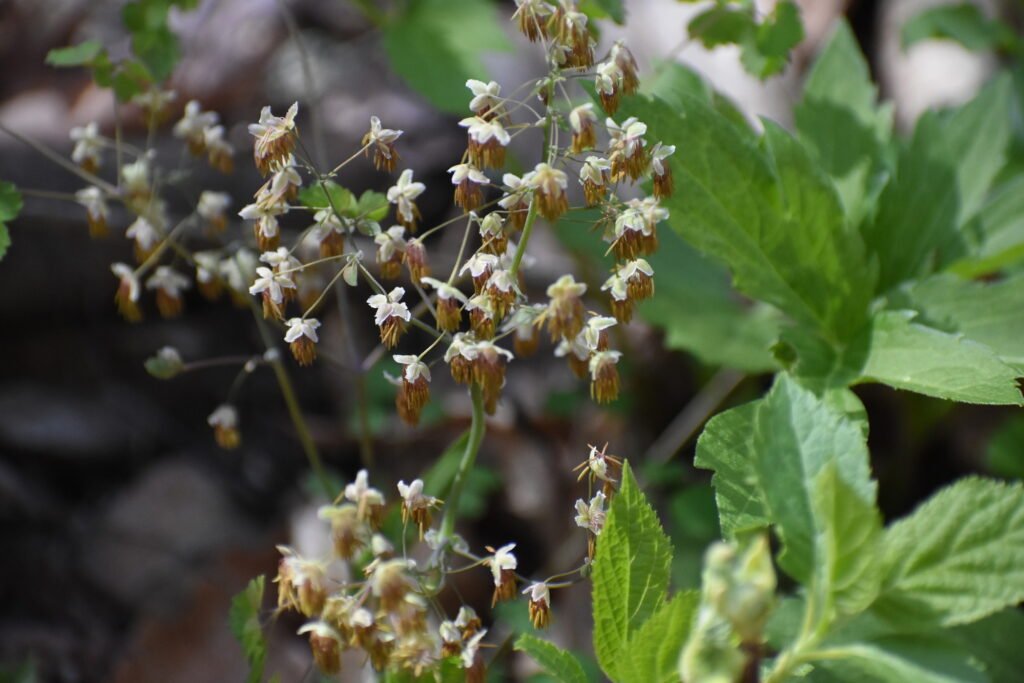
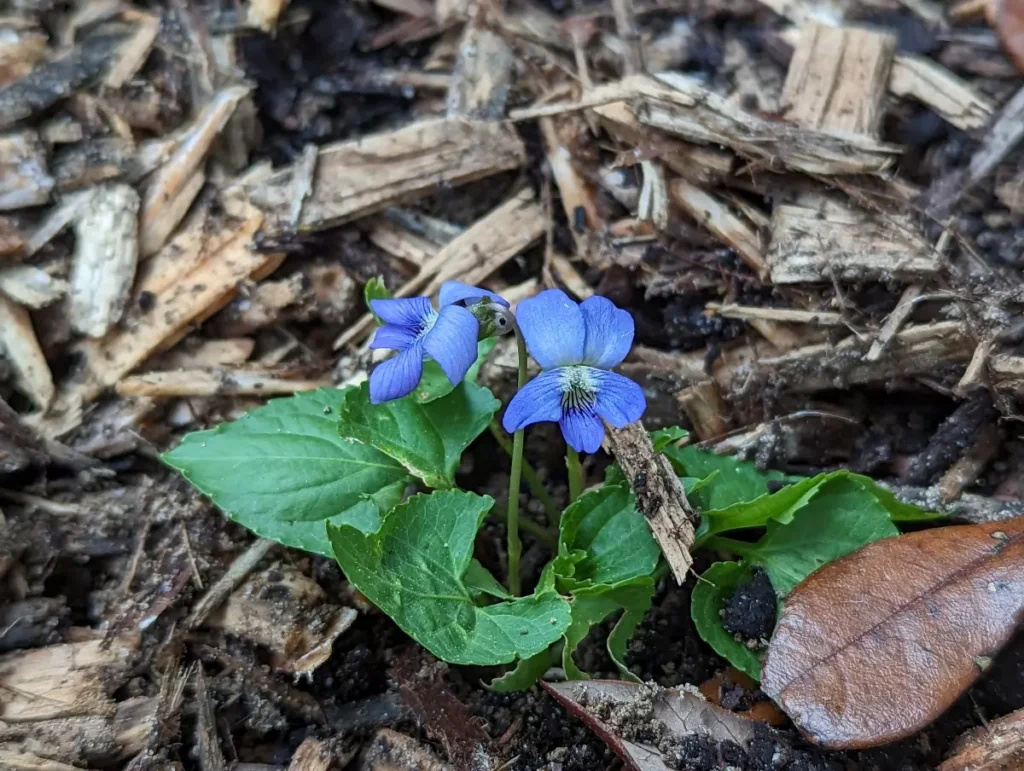
🌿 For Structure & Layering
- Solomon’s Seal (Polygonatum biflorum) – arching stems and dangling white flowers
- Lady Fern (Athyrium filix-femina) – A woodland classic, deeply cut, light green fronds bring texture and resilience—plus, it’s rabbit and deer resistant.
- Maidenhair Fern (Adiantum pedatum) – solid pick for home landscapes—great as a border plant alongside Wild Geranium, and it stands up well to deer pressure.
- Sweet Joe Pye Weed (Eutrochium purpureum) – A butterfly magnet that’s easy to grow, with vanilla-scented blooms that pull in Monarchs, Swallowtails, and more. Few woodland flowers can match its towering 7-foot presence.
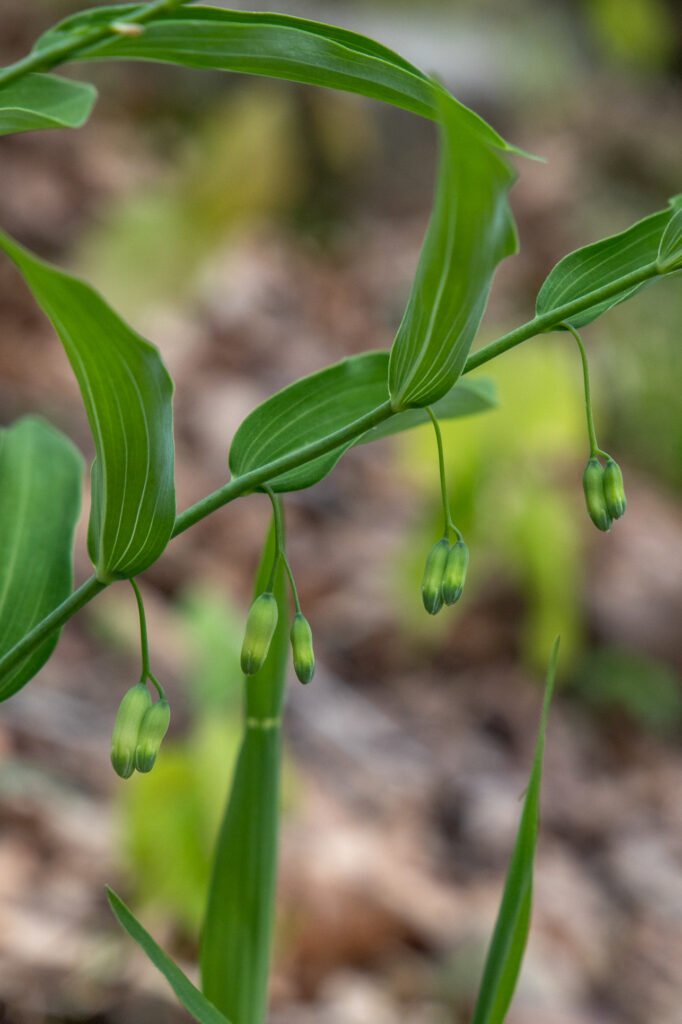
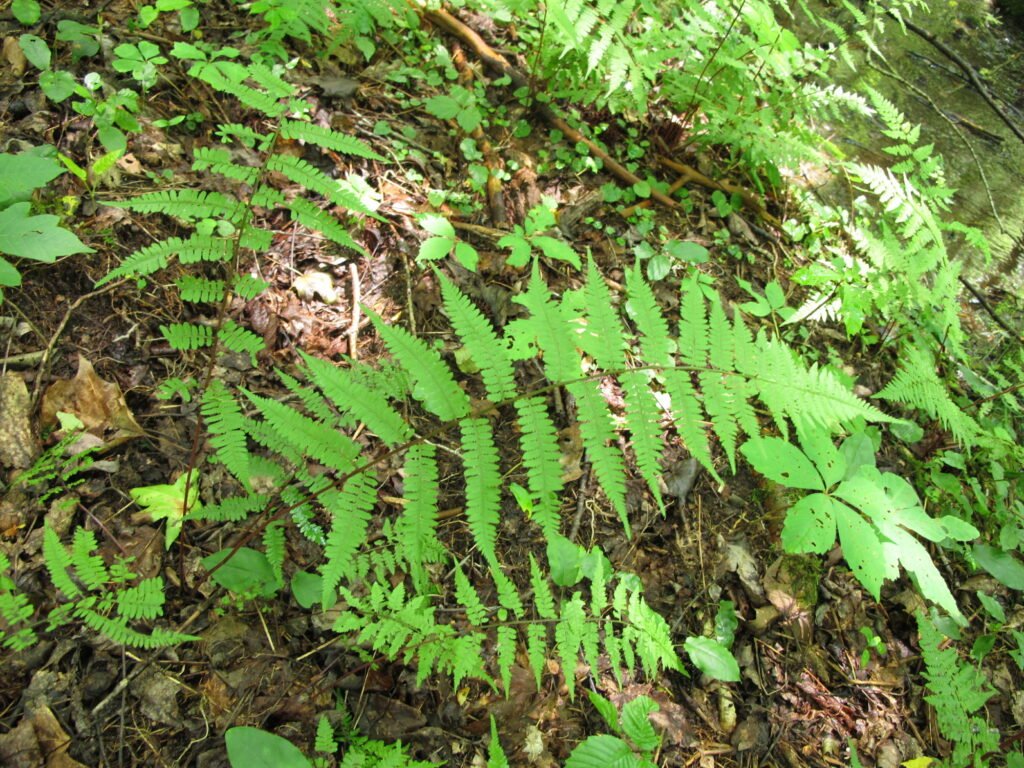
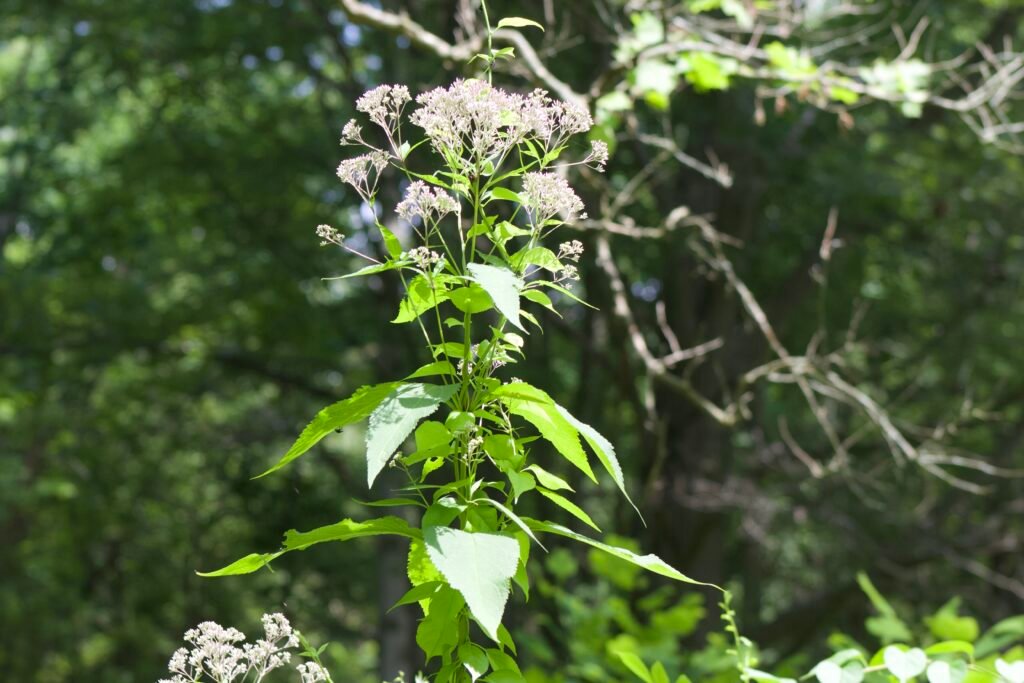
Companion Planting Ideas
These plants thrive when paired together in layered, woodland-style groupings. For example:
- Columbine + Wild Geranium + Golden Ragwort = early bloom succession
- Bluebells + Ferns + Wild Ginger = soft groundcover with seasonal accents
- Violets under Shrubs + Foamflower as edging = informal, functional edges
Let leaf litter remain — it feeds the soil, protects overwintering insects, and prevents erosion. Resist the urge to mulch everything flat.
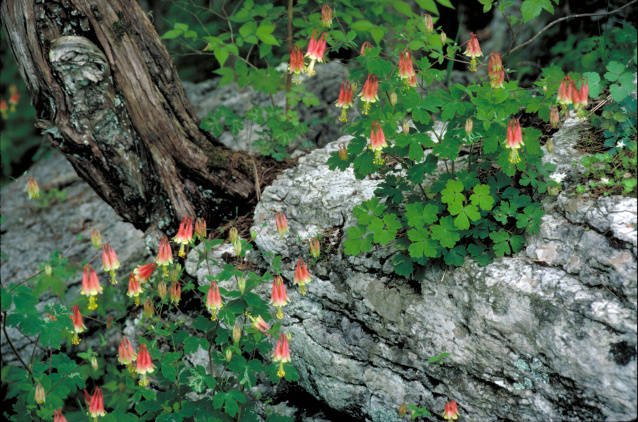
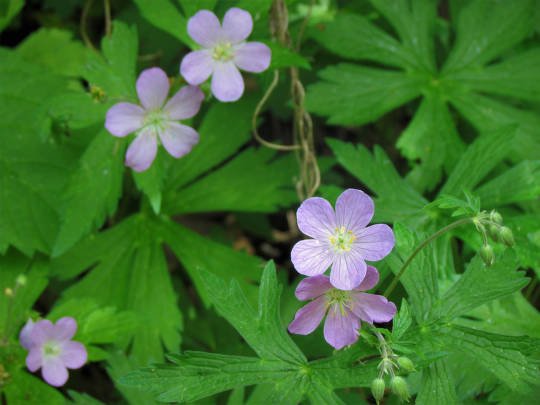
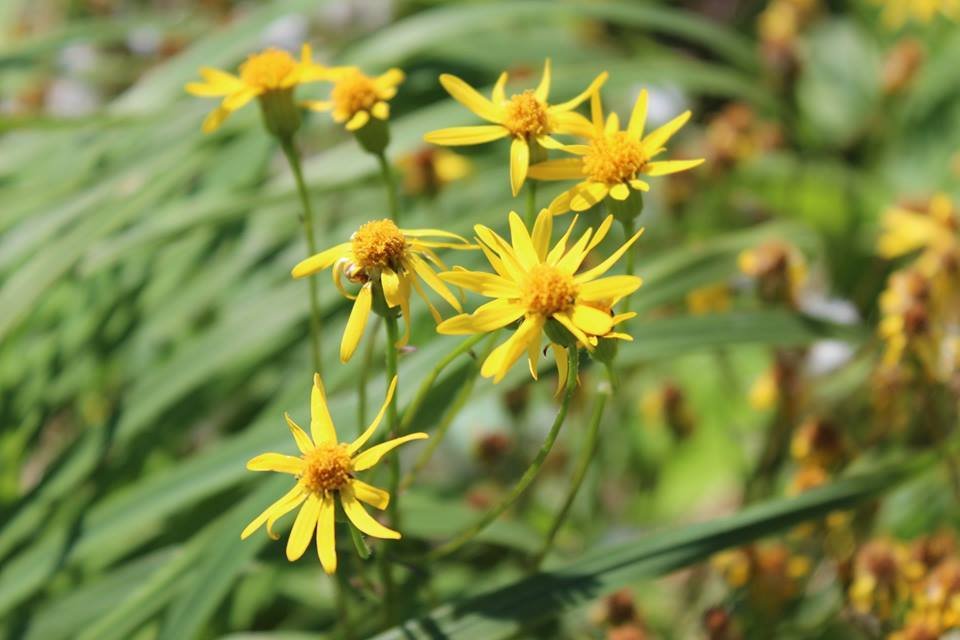
Establishment Tips
- Site prep: Remove invasive species and loosen compacted soil, but no need to till
- Spacing: Plant densely to shade out weeds — woodland species are often naturally close-knit
- Watering: Water during the first summer; after that, leaf mulch and shade keep moisture in
- Patience: Many of these plants take a season or two to establish — especially the spring bloomers
- Mulch: leaf mulch is vital to woodland species — find neighborhoods that bag leaves, to lay down over shaded area in the fall. leaves will break down adding needed nutrients for these species
Shade gardens don’t need to be formal or pristine. In fact, the more you let nature lead, the more beautiful they become.
Final Thoughts
Shade doesn’t mean dull. Native shade garden plants bring texture, structure, and quiet beauty to the shadows—creating a garden that feels rich, balanced, and very much alive
You may not see waves of Monarchs, but you will find the beauty of early bumble bees, fireflies flickering in leaf litter, and the slow unfolding of spring ephemerals that remind you — even the dim corners have their moment to shine.
Check out the hive
The Hive is a personalized native plant database, curated from scientific resources and tailored to your exact ecoregion. It offers detailed growing information for over 75 species.

